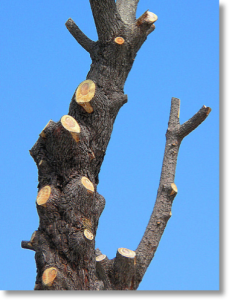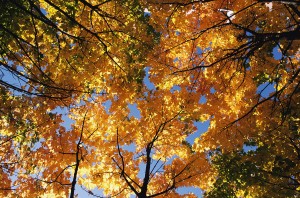How To Recognize Dead Branches Part 2
If you haven’t read part one of this two part series, you should go back and read what you missed. Okay, now that you’re caught up, we can proceed to part two.
Shake the branch in question. A slim, (roughly under a half inch in diameter) living branch should be flexible, bendable without cracking. If the wood is dead, it will snap. It will also often feel lighter, drier and hollower. Walking past shrubs with gloves shaking suspicious branches is a great way to quickly find dead wood.
Look for buds. Early spring when the buds begin to swell and break is a great time for this sign. If a node on the branch contains even one firm or swelling bud, the branch is still alive. If all the nodes are bare of buds, or has only dry buds that collapse when squeezed between your fingers, the branch is dead.
Look at the branch collar. The branch collar is the ring that completely encircles the base of a branch, just above where it attaches to its parent branch or the trunk. The collar will usually be slightly raised or swollen looking. When the branch dies, the collar at its base begins, year by year, trying to engulf and swallow the dead branch. If you see a roll of wood that seems to be creeping up your branch, that branch has probably been dead a while, and should be cut off just above the collar.
Now, if you do not feel comfortable or simply don’t have the proper tools to do any tree maintenance, we are more than happy to do any of this work for you. Also, if you have multiple trees to remove or just don’t have the time to do it, we are here for you. We can handle all of your tree maintenance needs and services in the Tri-Cities (Kennewick, Richland, Pasco) and even West Richland. We look forward to being your preferred tree maintenance provider.
How To Recognize Dead Branches Part 2 Read More »

